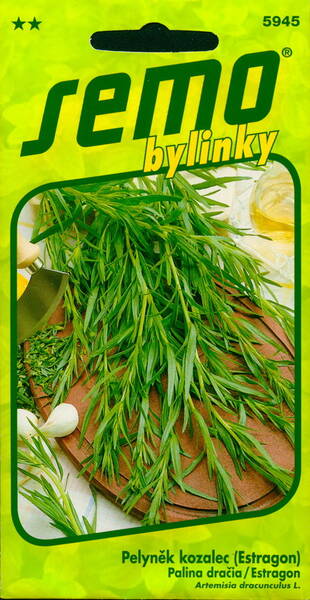Tarragon (Tarhun) is a perennial herb up to 1.5 m high. It blooms in June-August.
Tarragon has a strong aroma. It is used to flavor marinades, in the manufacture of cheeses, mustard, and various spice mixtures. Fresh tarragon leaves are used as an appetizer or a side dish for meat, egg, dairy dishes, and are added to vegetable salads.
In dried form, it is seasoned with some types of borscht, okroshka, fish soup, meat, dishes from the liver, heart, tongue and fish.
Tarragon is indispensable in homemade preparations. The substances contained in the leaves inhibit the growth of lactic acid bacteria, help preserve the color of the product, increase the strength, and improve the taste and smell of vegetables.
Medicinal properties: tarragon stimulates appetite, improves digestion and sleep, relieves the bitterness of drugs.
It is used as a diuretic, antihelminthic drug, for the treatment of dropsy, strengthening the walls of blood vessels. Due to the high content of vitamin C, carotene, rutin in essential oil, tarragon is used in folk medicine, including for the restoration of male strength.

Agrotechnics.
Tarragon tolerates spring and autumn frosts well. Demanding on light, because under shading conditions, the content of essential oil decreases and the aroma deteriorates.
Grows well on loose, humus-rich, calcareous soils. Seeds are sown in the spring in a greenhouse. Seedlings appear in 10-12 days. By autumn, the seedlings are planted in a permanent place. Care consists in loosening, weeding, watering and spring feeding.
Tarragon is also grown as a pasture crop in greenhouses. It grows well in boxes on the balcony, and in pots in winter.
In the first year, the crop is harvested once before flowering. In subsequent years, the young tops of the stems are removed three to four times during the summer at a height of 10-15 cm from the soil surface. The yield of greenery is 2.0-2.5 kg / m2.
Dried for harvesting in the shade under a canopy. Store in dry ventilated areas. To obtain the essential oil, plants are harvested during the flowering phase.
Eng.: Little dragon, Russian tarragon. Bot. syn.: Artemisia dracunculoides Pursh., Artemisia redowskii Ledeb., Oligosporus dracunculus L.











